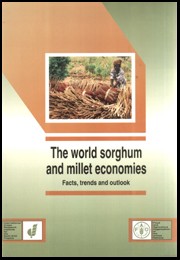
A joint study by the
Basic Foodstuffs Service
FAO Commodities and Trade Division
and the Socioeconomics and Policy Division
International Crops Research Institute
for the Semi-Arid Tropics
INTERNATIONAL CROPS RESEARCH INSTITUTE FOR THE SEMI-ARID TROPICS
Patancheru 502 324, Andhra Pradesh, India
FOOD AND AGRICULTURE ORGANIZATION OF THE UNITED NATIONS
Viale delle Terme di Caracalla, 00100 Rome, Italy
1996
|
The designations employed and the presentation of the material in this publication do not imply the expression of any opinion whatsoever on the part of ICRISAT or FAO concerning the legal status of any country, territory, city or area, or of its authorities, or concerning the delimitation of its frontiers or boundaries. Where trade names are used this does not constitute endorsement of or discrimination against any product by ICRISAT or FAO. |
M-71
ISBN 92-5-103861-9
All rights reserved. Except for quotations of short passages for the purpose of criticism and review, no part of this publication may be reproduced, stored in retrieval systems, or transmitted in any form or by any means, electronic, mechanical, photocopying, recording, or otherwise, without prior permission from ICRISAT and FAO (the Director, Information Division). Payment is not required for the noncommercial use of ICRISAT/FAO's published works, and it is hoped that this copyright declaration will not diminish the bona fide use of research findings in agricultural research and development.
©FAO AND ICRISAT 1996
This electronic document has been scanned using optical character recognition (OCR) software and careful manual recorrection. Even if the quality of digitalisation is high, the FAO declines all responsibility for any discrepancies that may exist between the present document and its original printed version.
Internal marketing and domestic policies
Technological change, environmental issues and focus of research
International trade, market prices and stocks
Internal marketing and domestic policies
Technological change, environmental issues and focus of research
North Africa and the Middle East
Eastern and Southern Africa (continued)
Western and Central Africa (continued)
Latin America and the Caribbean